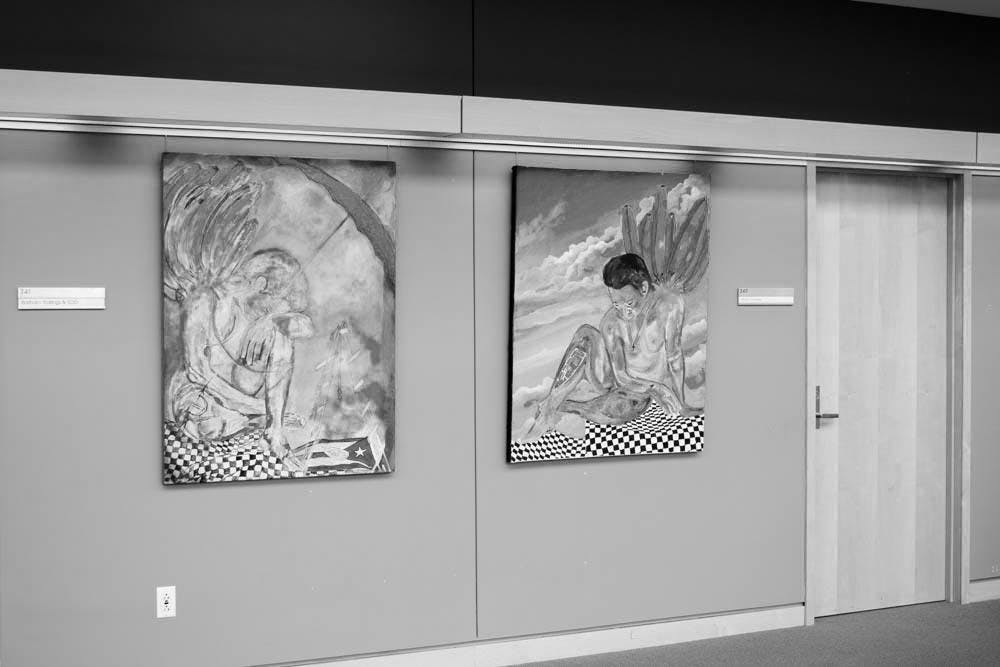A distinctive combination of visual metaphors, color and depth underlies the “Silenced Voices” exhibition, which is currently on display at The Watson Institute for International and Public Affairs. The exhibition features the work of Cuban-born artist, Raphael Díaz, who explores elements that are both universal and autobiographical, such as migration and the fragility of life.
“(Díaz’s work) talks about migration and displacement, (which) are very important themes of intellectual inquiry at the Watson Institute,” said Steven Bloomfield, associate director of the Watson Institute. “There are people suffering all over the world; there are refugees all over the world; there are people crossing borders. … We have a scholarly and a policy interest in those displacements,” he added.
The theme of migration in Díaz’s artwork is inspired by his personal experience immigrating to the United States. “I came to the U.S. (when) I was 3 years old, when my mother left Cuba,” Díaz said, emphasizing that leaving Cuba was not his choice. “My work talks about my personal experiences, but also (relates to the experiences) of so many other people,” he said in reference to the DACA recipients and refugees in Europe. “I am a reflection of my society,” he said.
While Díaz’s paintings are accentuated by varied and bright colors, “upon looking more deeply, one sees anguish and frustration,” Bloomfield said. “What one sees in the paintings are the faces of many people who are … seeking an opportunity to express their voices … (which) don’t seem to be appreciated and (are) in the process of being suppressed.”
“‘Silenced Voices’ are about those people who cannot talk,” Díaz explained. “They don’t have a voice, and I would like my art to be a voice for them,” he added.
The recurring motifs in Díaz’s work are unmistakably idiosyncratic. For instance, the focus of each painting is a surreal, angel-like figure, with wings made of plantains. “It’s a self-portrait,” Díaz explained. “When I was younger, my mother used to send me to buy plantains” because they were unable to afford more exotic varieties of fruits. “The other children used to make fun of me and call me ‘the plantain boy.’” Rather than succumbing to their derision, Díaz chose to embrace this aspect of his identity by illustrating himself as a ‘plantain angel’ in each of his works. “They say ‘you are what you eat,’ so the plantain angel is me,” he said.
Other distinctive elements of Díaz’s work include fragile boats and a black-and-white checkerboard. While at first glance, these motifs appear to be a melange of disparate elements, their symbolism is profound. For instance, the boat represents a form of transport for several migrants, Díaz explained, and added that it can also symbolize how people travel from one life into another after death. Meanwhile, the black-and-white checkerboard is a reminder to the viewer that “nothing in life is ever stable.”
“I definitely noticed the recurring motifs (in the paintings),” said Annie Lehman-Ludwig ’20, an art history concentrator. “The viewer can really look at (Díaz’s) work and see what the ‘silenced voices’ mean,” she added.
While migration is a prevalent theme of Díaz’s work, his art also addresses life and its ephemeral quality. “Life is so fragile and we take it for granted,” Díaz said. “As humans, we are always in a rush. We’re always moving from here and there and we never stop to reflect … I would like people to stop and look at my work and reflect,” he said.





